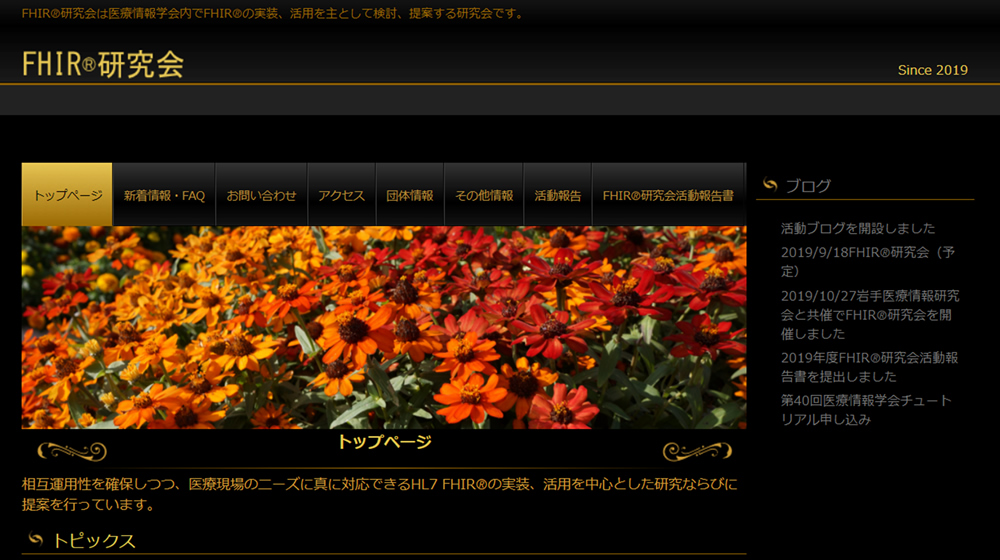Promotion of Standardization
FHIR® Research Group
We organized the FHIR Research Group, a research task group which belongs to the Japan association for medical informatics. The FHIR Research Group meetings are held aiming for the implementation and utilization of the Fast Healthcare Interoperability Resources (FHIR) 🄬, a next generation standard for medical information exchange.

The Japanese Circulation Society (JCS) Standard Export datA forMAT(SEAMAT)
SS-MIX2 (Standardized Structured Medical record Information eXchange) is a structure for data storage, which enables medical settings to store and exchange patient data in a standardized format. SS-MIX2 comprises two types of storage, i.e., standardized storage and extension storage. Standardized storage stores structured data with standard codes, such as disease names, results of blood test, and prescriptions. Extension storage stores unstructured data, including results of ECG and cardiac catheterization. These data in extension storage need to be standardized for their better use.
In the field of cardiovascular medicine, we have been working with the cooperation of the Integrating the Healthcare Enterprise Japan (IHE-J) to make a guideline to define the standardized format for clinical test data, such as ECG, UCG, and cardiac catheterization. The guideline,"Standard Export Data Format (SEAMAT)," was formulated in 2014 and released in 2015 with the approval of the Japanese Circulation Society (JCS). We will continue to improve SEAMAT and promote the widespread use of the guideline in Japan.
Standardized Format for Patient Allergy Information
In terms of medical safety, it is quite essential for healthcare providers to share patient allergy information with each other. Most medical facilities, however, do not have specific rules on how to handle the allergy information. To investigate the rules of medical facilities on patient allergy information, we conducted a nationwide survey at large hospitals (over 600 beds) in 2012. The results showed that there were several issues to be addressed: contents of allergy information and rules for dealing with it are different in each medical setting; alert functions in EMR are not standardized; and there is no common concept of allergy information in Japan. Based on the results, we have developed a novel format for patient allergy information and implemented the format in the EMR system of Tohoku University Hospital (TUH). Through discussions with interdisciplinary staff of TUH, we have been making continuous efforts to improve the system.
© 2020 Department of Medical Informatics, Tohoku University School of Medicine
